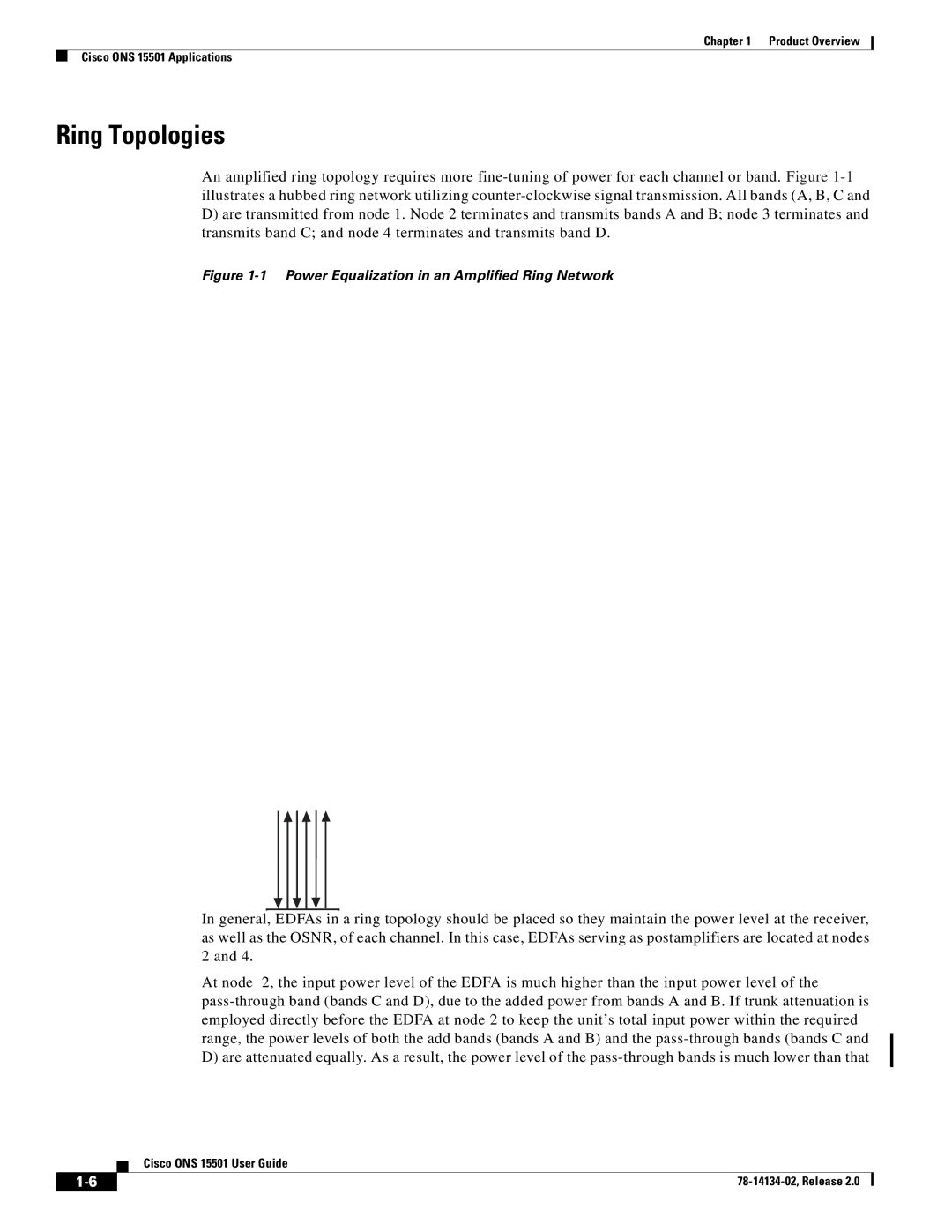
Chapter 1 Product Overview
Cisco ONS 15501 Applications
Ring Topologies
An amplified ring topology requires more
D)are transmitted from node 1. Node 2 terminates and transmits bands A and B; node 3 terminates and transmits band C; and node 4 terminates and transmits band D.
Figure 1-1 Power Equalization in an Amplified Ring Network
In general, EDFAs in a ring topology should be placed so they maintain the power level at the receiver, as well as the OSNR, of each channel. In this case, EDFAs serving as postamplifiers are located at nodes 2 and 4.
At node 2, the input power level of the EDFA is much higher than the input power level of the
| Cisco ONS 15501 User Guide |
